When considering using conservation detection dogs for an upcoming project, you may be curious how the dogs work in higher temperatures. Can dogs work safely in the heat? Does the heat affect their olfaction? Since conservation detection dogs are still emerging within their field, it’s hard to find consensus regarding the impacts of environmental factors on their work. This includes the impact of heat on their accuracy and efficiency.
Studies of body temperature changes in various types of working dogs (police detection, search and rescue, etc.) have yielded mixed results. This indicates that factors such as breeding, physical fitness, and acclimation greatly shape how individual dogs respond to heat. Nonetheless, examining and comparing sources paints a clearer picture of the general effects.
As conservation dog handlers, we are most concerned with two categories: scent detectability and physical wellbeing. Excessive heat is much more likely to affect physical wellbeing. This means that handlers should be extra cautious to ensure the safety of their dogs in hot weather. Still, it’s important to note the ways in which heat can alter target scents.
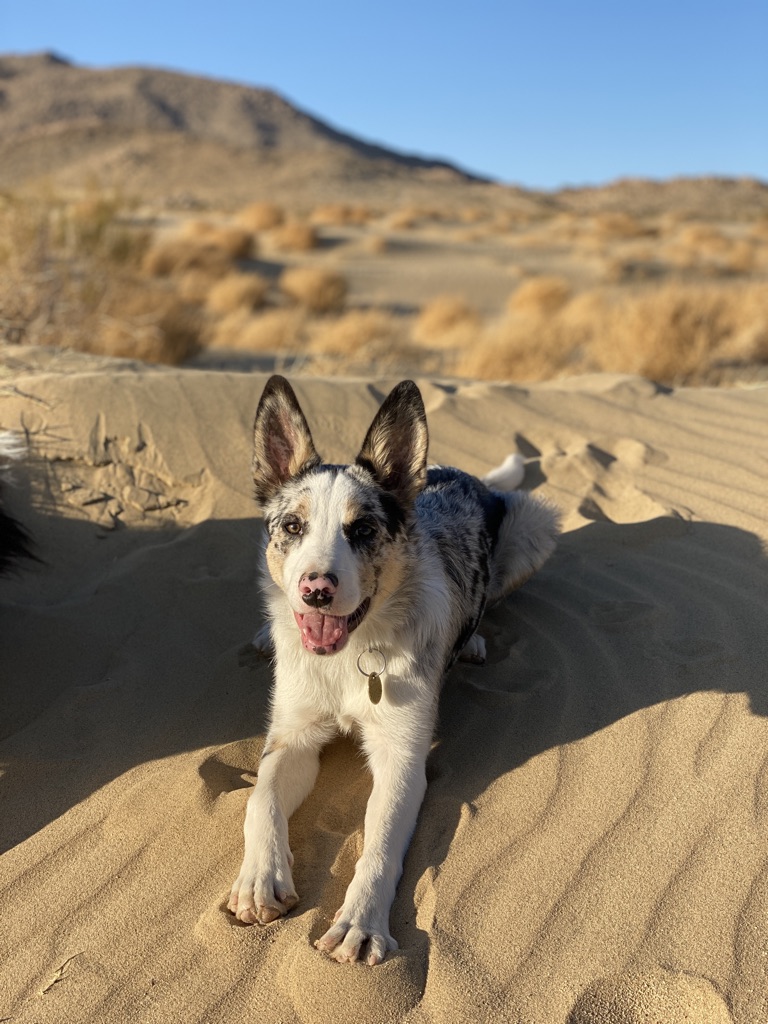
How Does Heat Affect Scent for Conservation Detection Dogs?
- Heat can cause stronger vapors to be emitted from scent sources. This is because higher temperatures correspond to higher release rates of volatile organic compounds, which contribute to smell.
- Heat encourages the activity of scent-producing microbes.
As these factors increase the intensity of scent, they may play a role in search dog accuracy. In one study from 2023, researchers measured the effects of air temperature and humidity on conservation detection dog performance. They found that at high temperatures (namely 30-35ºC), sensitivity increased while specificity decreased. This means that while dogs were more likely to alert their handlers to target scents, these alerts were more often false positives. As temperatures dropped, false negatives increased.
However, the correlation was not as strong as researchers hypothesized. They concluded that statistical evidence was weak. As it stands now, heat has not been shown to have nearly as much impact on scent detectability as rainfall, distance, decomposition, etc. It has, however, been shown to take a toll on the bodies of search dogs.
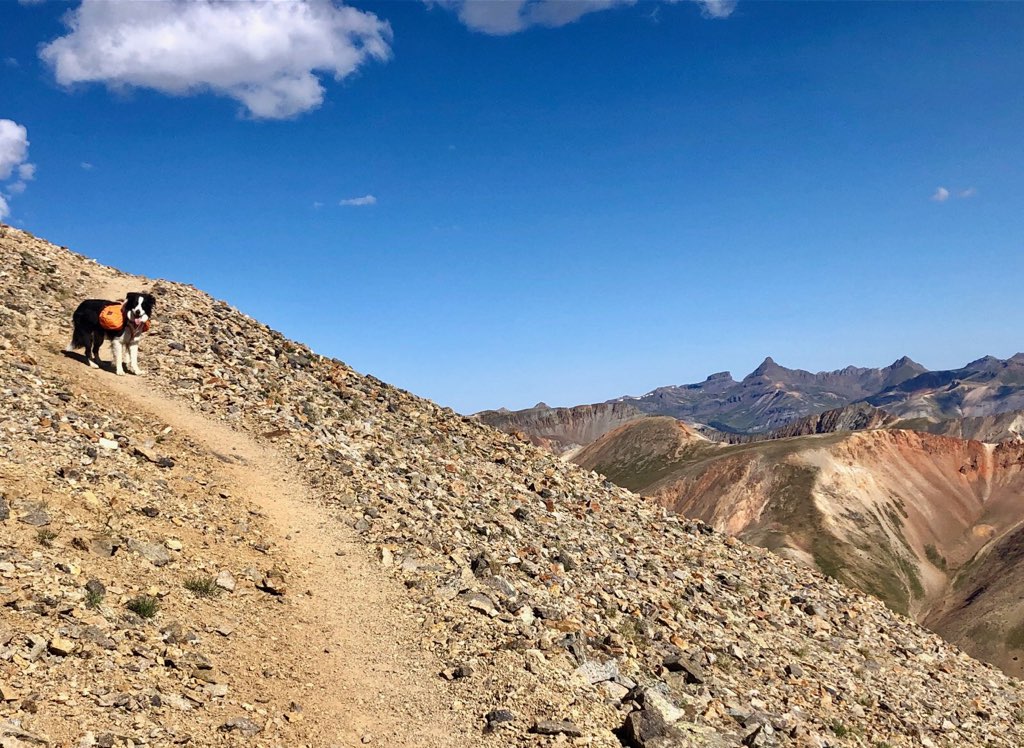
How Does Heat Affect Safety for Conservation Detection Dogs?
Heat impacts the thermoregulation abilities of dogs in ways it does not impact their handlers. Without proper knowledge on the handlers’ parts, this can lead to dogs overheating in seemingly safe conditions, such as the first warm spring day. At a minimum, any dog that is panting with a wide-open mouth is unable to actively sniff. At the more extreme end, heatstroke can and does kill working dogs.
Why Do Dogs Overheat More Easily than People?
Unlike humans, dogs do not sweat in a thermoregulatory capacity except through their paws, relying on panting as their primary cooling method. When a dog pants, they exhale warmer, moister air in exchange for cooler, drier air. In hot and/or humid conditions, less heat is able to dissipate from the dog into their environment, increasing the risk of overheating. This compromises their accuracy, efficiency, and most importantly, safety. More information on canine thermoregulation can be found in this 2017 study on hydration.
How to Prevent Heat Injury to Conservation Detection Dogs
Handlers must be aware of the warning signs of a canine in heat distress.
The K9 Conservationists podcast discusses this at length in two episodes; The first with Dr. Janice Baker from the Veterinary Tactical Group, and the second with doctors Anne Hall and Emily Carter. Both address the physical and behavioral symptoms of heat stress in dogs. It is important to know the signs that a given working dog will show. Some dogs hide their heat distress due to their “drive” to work and need to be monitored carefully. An expert handler is constantly assessing their dog’s readiness to work and scene safety.
If a dog starts showing the signs below, they need a break; water and time to cool off.
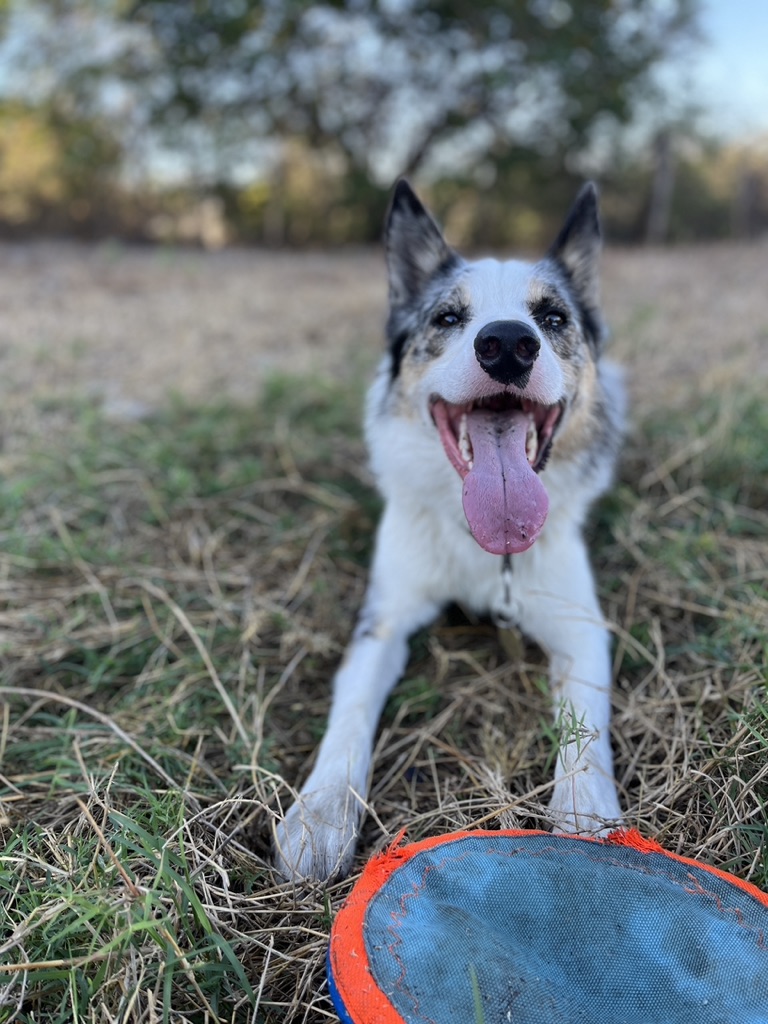
Signs It’s Time to Rest the Working Dog:
- Spoon-shaped tongue
- Heavy panting
- Slowing down
- Checking in with the handler for rest or water
- Shade-seeking
- Trying to cool off in puddles or ponds
If you see the signs above, it’s time to take a break and offer your dog water or let them take a dip in a river. Wait for panting to subside before returning to work, or end the survey if it’s gotten too hot.
Signs Your Dog Needs Active Cooling:
- Wide-mouth panting (you can see molars)
- Bright red membranes
- Fatigue or lethargy
- Decreased interest in work
- A more spoon-shaped tongue, which may curl up at the end
- More extreme versions of the symptoms above
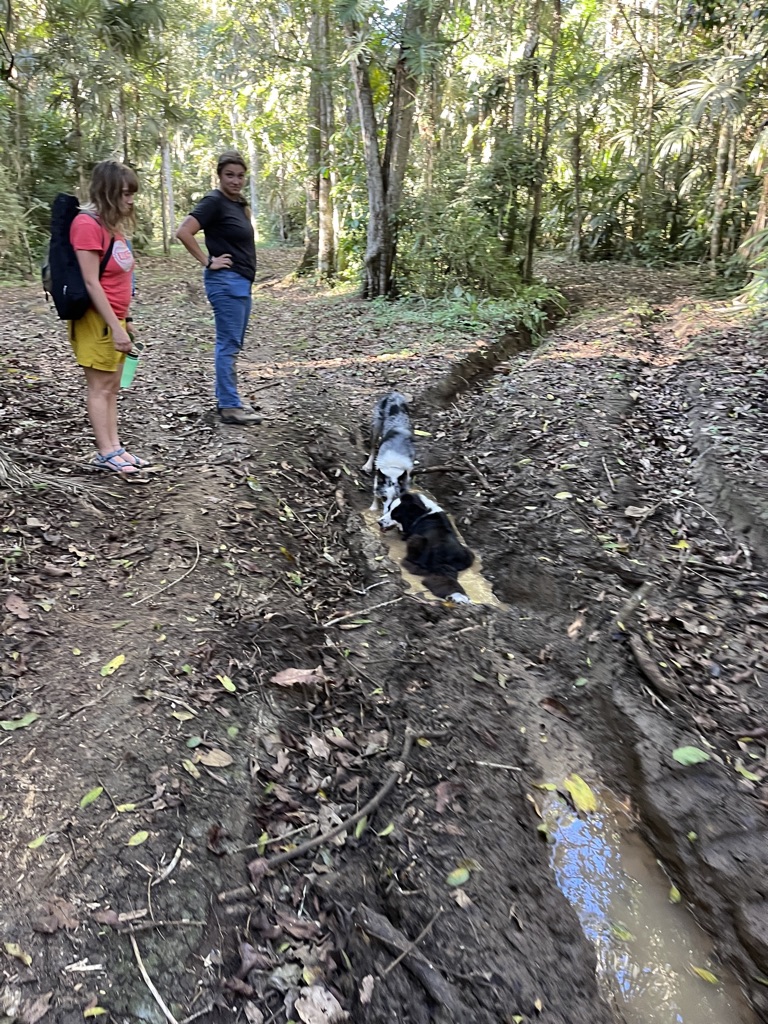
If you notice these signs, it’s time to stop work and actively cool your dog with running water. Do what you can to cool your dog down quickly and efficiently with water and airflow, especially to their belly, armpits, groin, and ears.
Extreme Signs of Canine Heat Injury:
- Continuation or worsening of above symptoms
- Vomiting
- Diarrhea
- Extreme salivation
- Loss of coordination
- Loss of consciousness – at this point organ damage has likely begun and survival can drop to 50% or less.
A dog exhibiting the signs above needs immediate veterinary attention. Cool rapidly and thoroughly, and continue cooling while you transport. The Veterinary Tactical Institute reminds us, “Cool first, then transport.”
Will Working Dogs Stop Themselves Before they Overheat?
It’s important to note that measuring working dog behavior is tricky! As a typical example, an overheating dog chasing a ball may start to trot instead of sprint. They may take longer to bring the ball back, stopping to sniff and pee along the way. As heat stress progresses, they may lose interest altogether. However, behavior varies from dog to dog. High-drive, high-energy dogs might not know when to stop, which can lead them to push past their limits if left unchecked. As conservation detection dogs are typically selected for drive and energy, it’s crucial for handlers to recognize heat stress in their dogs even if the dogs themselves don’t seem to. Equally crucial is understanding risk factors and knowing how to mitigate harm.
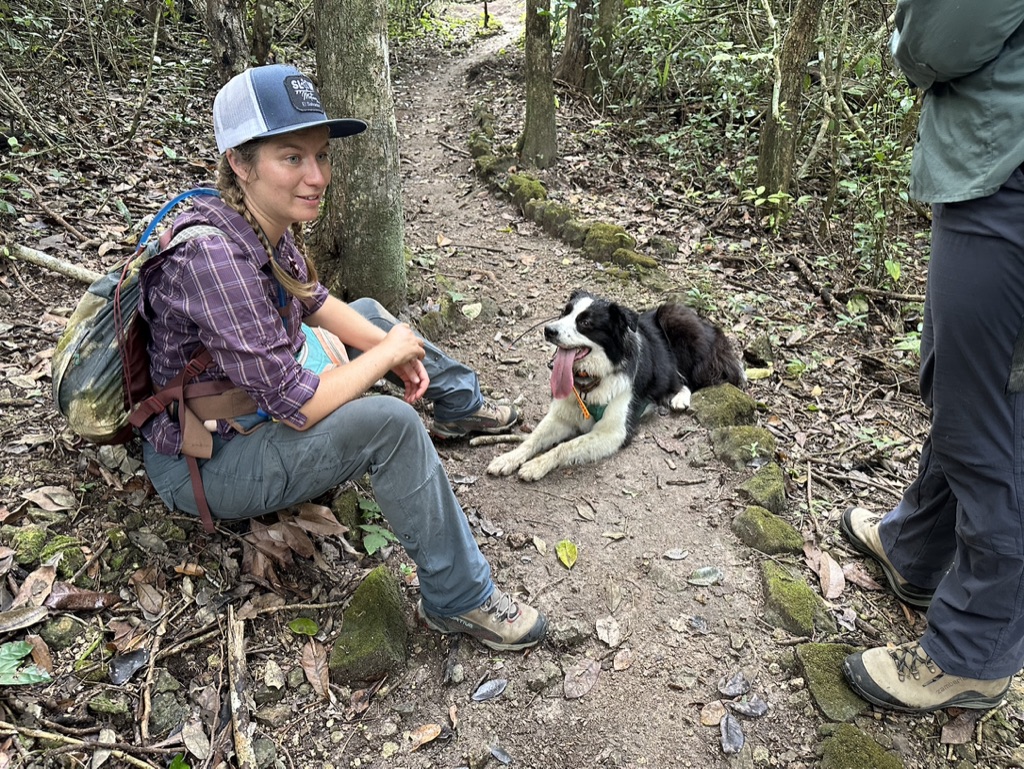
When Are Dogs Most at Risk of Heat Stress or Injury?
As Dr. Baker discusses in her episode of the podcast, dogs are most at risk of developing heat stress when the ambient temperature of their environment changes suddenly. Dogs can overheat in any temperature that’s warmer than they’re used to, whether it be tropical or below freezing.
Dehydration also increases the risk of heat stress, causing symptoms such as lethargy, excessive panting, and thick saliva. It can also dry out the eyes and nose, making it harder to detect scents. For more information on how to care for working dogs in the heat, check out the full podcast episodes. Now it’s time to discuss precautionary measures.
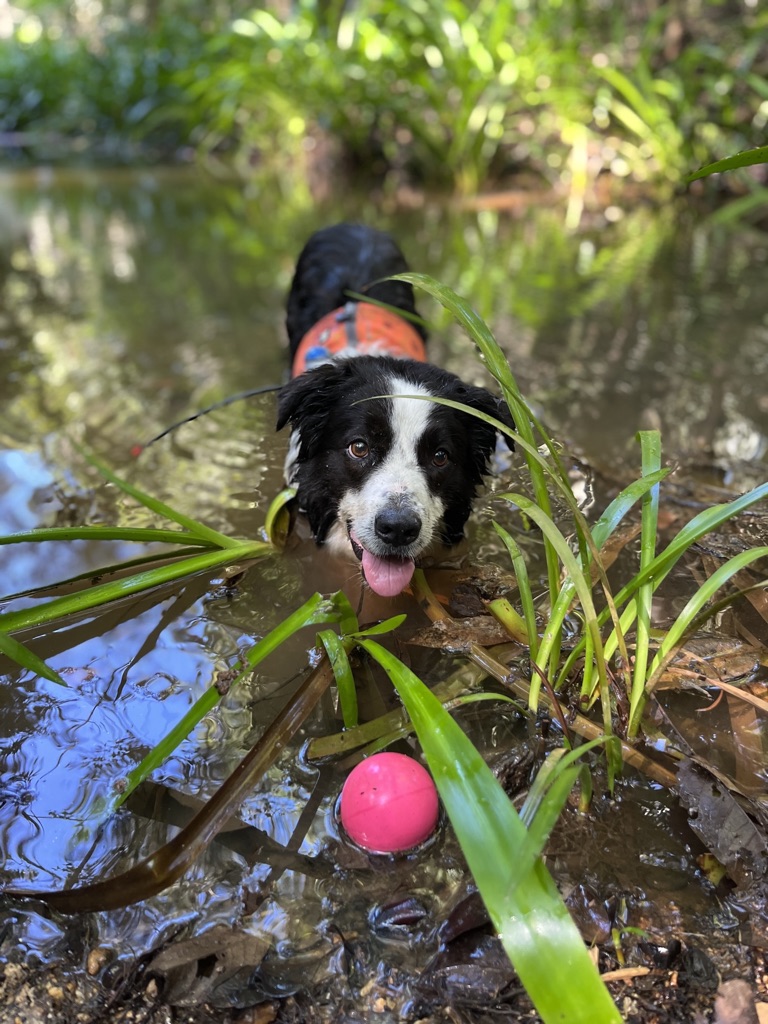
How To Reduce the Risk of Heat Injury to Conservation Detection Dogs
At K9 Conservationists, our handlers have several strategies to reduce the chance of a heat injury for our working dogs:
- Intensify workouts and endurance training for their dogs leading up to deployments. Dogs in peak physical shape fare better in the heat, so this helps them perform at their best.
- Arrive at field sites days or weeks early, allowing time to acclimate and adjust to the landscape.
- Surveys are generally scheduled for cooler months at cooler times of day to avoid extreme heat.
- When the dogs do work in heat, they take plenty of breaks and are monitored for the symptoms listed above.
In addition to physical training, acclimation, and breaks, working dogs need their handlers to know them really well. Many factors affect the ways dogs respond to heat. Some handlers take their dogs’ rectal temperatures at various stages of work under normal conditions to find their individual baselines. This is important as different dogs operate at different baseline temperatures. Equally important is knowing how individual dogs respond behaviorally to heat. These behaviors are typically clear, early warning signs. Ultimately, keeping search dogs safe in the heat improves their accuracy and efficiency. Most importantly, it keeps their tails wagging in the world they’re working to protect.
In conclusion, heat affects search dog accuracy in complex ways. Some studies suggest that it alters scent detectability in ways that can affect sensitivity and specificity. However, research remains to be done on this topic. The biggest factor to worry about with heat is its impact on dogs. Heat can be dangerous, but being aware of the warning signs, risk factors, and ways to mitigate harm works wonders. At the end of the day, search dog safety should remain a top priority. If you would like to consult with the K9 Conservationists team regarding safety or logistics for an upcoming project with our conservation dog teams or any other dog teams, please reach out. We would be thrilled to help!
 Donate
Donate

